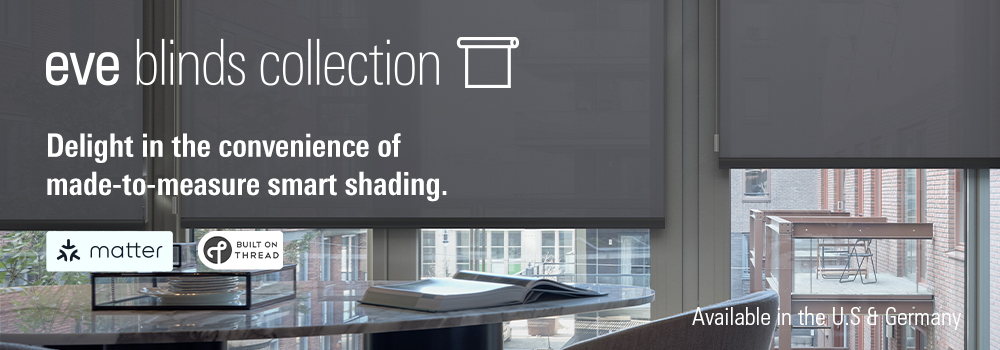Matter is not alone with its approach of connecting devices in the smart home via a common language. There have been previous attempts to create such a cross-manufacturer protocol. One of the oldest initiatives of this kind is the Open Connectivity Foundation, orOCF for short (link).
OCF was formed in 2016 from the merger of several company alliances. The Open Internet Consortium (OIC) – founded in 2014 by Intel, Samsung, Dell and chip manufacturer Broadcom – merged with the UPnP Forum (Microsoft, Nokia, Siemens, Samsung, Sony …) and the Allseen Alliance (Alljoyn) of Electrolux, Canon, Cisco, LG, Samsung and others. The fact that some of the companies were already involved in all three alliances and that the standardisation of IoT devices pursued an open source approach facilitated the collaboration.
The Open Connectivity Foundation then presented its “world’s first international standard for the smart home” at CES 2020 in Las Vegas. Members such as BSC Computer, Haier, LG and Samsung demonstrated beta versions of their products – including televisions and tablets, but also household appliances such as air conditioners and robot vacuum cleaners. The claim that OCF works independently of the transport layer sounded promising. Thanks to platform-neutral encryption, secure communication should also be possible via Bluetooth, EnOcean, Zigbee and Z-Wave in addition to Wi-Fi and LAN – both locally on site and via cloud servers over the internet. The development of a chip platform for the Thread wireless protocol was also announced in 2021.
OCF extends its framework with a Matter Bridge
However, the big product rush has not materialised so far. The OCF currently only lists a few dozen certified products on its website (link), but points out that the list is incomplete because some companies prefer to keep this information private. It is therefore interesting that the Open Connectivity Foundation is now announcing (link) a Matter Bridge. An update of the software framework (2.2.7, link) enables Matter products and OCF products to coexist and interact in the same smart home. This seems only logical, as both solutions basically pursue the same goal. The Open Connectivity Foundation also standardises things that are among the fundamental benefits of Matter:
- Authentication: The basis of all IoT security is the proven identity of devices. Similar to Matter, OCF enables this via digital certificates in every endpoint – on end devices as well as in gateways and cloud services. The asymmetric cryptography used and the ecosystem’s public key infrastructure (PKI) are also similar.
- Commissioning: The OCF standard offers secure mechanisms for authorisation to mitigate risks during the onboarding process. When new devices or services are added, they must identify themselves in order to access the other resources and vice versa. Their access can be controlled via control lists and authorisations.
- Communication: Sensitive information is encrypted using TLS and DTLS security protocols to make it inaccessible to unauthorised persons. There are restrictive standard guidelines for data traffic in the network – to protect against unintentional or malicious denial of service (DoS) attacks on the smart home.
- Updates: The OCF specification supports updates to the device firmware in order to rectify discovered vulnerabilities or exclude potentially dangerous products. An online repository, the OCF Conformance Management System (OCMS), can be used to determine the certification status of a certified device, including its security attributes and the OCF version againts which it has been certified. This is reminiscent of the Distributed Compliance Ledger (DCL) in the Matter standard.
However, the data model differs significantly in one respect: Matter devices form a trusted group, known as a Fabric, during installation. Matter Fabrics are logical collections of communicating nodes that share a common root directory and a common configuration. A Matter Node can therefore join several fabrics and store several Node IDs for each individual fabric. There is no equivalent to this in OCF. Therefore, in bridging mode, the IDs for Fabric and Node on the Matter side cannot simply be translated into the OCF data model.
Support for five device types from Matter 1.0
Instead, the individual clusters of Matter device types – such as on/off and brightness for a dimmable light – are mapped to the corresponding resources at OCF. Provided, of course, that this correspondence exists on the part of the Open Connectivity Foundation. According to the OCF’s Secure IP Device Framework, this is currently only the case for five device classes: on/off lights, dimmable lights, on/off plugs, thermostats and fans. Technically, the framework is still on Matter version 1.0, but a start has been made. And, as we know, Matter ecosystems are not built in a single day either.
Share this information:


